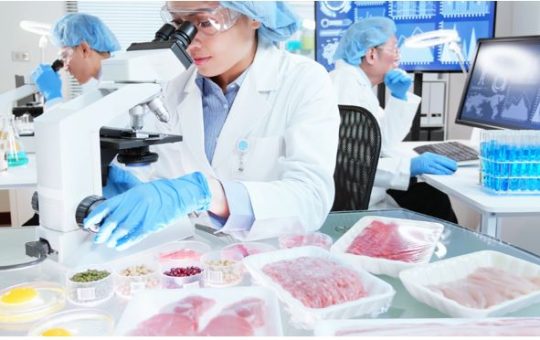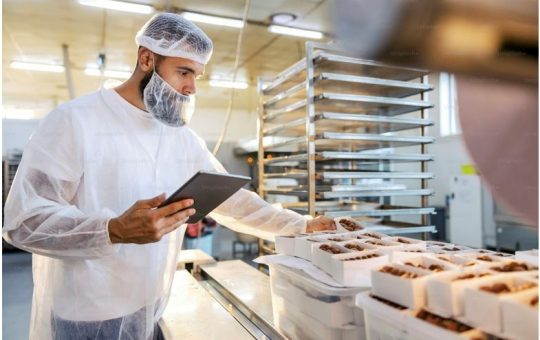
LEVEL 2 AWARD IN FOOD SAFETY FOR CATERING
Level 2 Award in Food Safety for Catering
Course Overview
The Level 2 Award in Food Safety for Catering is an intermediate-level qualification aimed at individuals working in food catering environments such as restaurants, hotels, or cafes. This course provides a deeper understanding of food safety and hygiene standards, emphasizing the prevention of foodborne illnesses, safe food handling, and maintaining a hygienic working environment. It is ideal for those already working in food preparation, service, or other food-related roles, helping them to ensure that food is prepared, stored, and served safely.
Benefits
- Comprehensive Knowledge: Gain a thorough understanding of food safety principles, including hazard control, temperature control, and contamination prevention.
- Regulatory Compliance: Learn about food safety regulations and how to comply with local health and safety standards.
- Prevent Foodborne Illnesses: Reduce the risk of foodborne illnesses in catering environments through the implementation of safe food handling practices.
- Career Advancement: Enhance career prospects by demonstrating a higher level of food safety knowledge, making you a valuable asset in the catering industry.
- Improved Operational Efficiency: Implement practical food safety measures to ensure smooth operations in catering services while minimizing risks.
Learning Outcomes
Upon completing the course, learners will be able to:
- Understand the principles of food safety and their importance in catering environments.
- Identify and control hazards that could lead to foodborne illnesses.
- Implement safe food handling practices in food storage, preparation, and service.
- Understand the importance of temperature control and food storage requirements.
- Follow procedures for cleaning and maintaining a hygienic food preparation environment.
- Recognize and manage food safety risks in the workplace.
- Ensure compliance with food safety regulations and standards.
Study Units
Unit 1: Introduction to Food Safety and Legislation
- Understanding food safety and its importance in the catering industry.
- Overview of relevant food safety legislation and food hygiene regulations.
- The role of food safety management systems in catering environments.
Unit 2: The Importance of Personal Hygiene
- Personal hygiene practices to prevent contamination.
- Handwashing techniques and the use of gloves and protective clothing.
- Managing illness in the workplace to prevent foodborne diseases.
Unit 3: Foodborne Illnesses and Hazards
- Types of foodborne illnesses and their causes.
- Identification of physical, chemical, and biological hazards.
- Understanding cross-contamination and how to control it.
Unit 4: Safe Food Handling Practices
- Safe handling and preparation of food.
- Procedures to avoid cross-contamination, including the separation of raw and cooked foods.
- The role of temperature control in food safety (e.g., safe cooking, hot-holding, and chilling temperatures).
Unit 5: Food Storage and Temperature Control
- Correct food storage methods to prevent contamination and spoilage.
- The importance of temperature control in food storage and handling.
- Procedures for monitoring food storage temperatures and ensuring safe practices.
Unit 6: Cleaning and Sanitizing Procedures
- The significance of cleaning and sanitizing in food safety.
- Correct methods for cleaning and sanitizing food preparation areas, utensils, and equipment.
- Maintaining a hygienic environment in the catering workplace.
Unit 7: Reporting and Managing Food Safety Hazards
- Identifying and reporting food safety hazards.
- Practical strategies for managing food safety risks in the workplace.
- Understanding the role of food safety audits and inspections.
Career Progression
The Level 2 Award in Food Safety for Catering qualifies individuals to work in a variety of food handling and preparation roles. It provides a solid foundation for further advancement in the food safety or catering industries. Career paths include:
- Catering Assistant: Support food preparation and service while adhering to food safety protocols.
- Kitchen Assistant: Assist with meal preparation and ensure safe handling and hygiene practices.
- Chef/Cook: Prepare meals safely in accordance with food safety standards.
- Food Safety Supervisor: Oversee food safety practices and ensure compliance with regulations in catering environments.
- Restaurant Manager: Manage the day-to-day operations of catering services, ensuring food safety and hygiene standards are met.
- Health and Safety Officer (Catering): Work in large catering operations or food service companies to monitor and maintain food safety procedures.
With this qualification, you can also progress to higher-level food safety training and certifications, such as the Level 3 Award in Food Safety for Catering, for more advanced roles in food safety management.
Our assessment process is designed to ensure every learner achieves the required level of knowledge, skills, and understanding outlined in each course unit.
Purpose of Assessment
Assessment helps measure how well a learner has met the learning outcomes. It ensures consistency, quality, and fairness across all learners.
What Learners Need to Do
Learners must provide clear evidence that shows they have met all the learning outcomes and assessment criteria for each unit. This evidence can take different forms depending on the course and type of learning.
Types of Acceptable Evidence
Assignments, reports, or projects
Worksheets or written tasks
Portfolios of practical work
Answers to oral or written questions
Test or exam papers
Understanding the Structure
Learning outcomes explain what learners should know, understand, or be able to do.
Assessment criteria set the standard learners must meet to achieve each learning outcome.
Assessment Guidelines
All assessment must be authentic, current, and relevant to the unit.
Evidence must match each assessment criterion clearly.
Plagiarism or copied work is not accepted.
All learners must complete assessments within the given timelines.
Where applicable, assessments may be reviewed or verified by internal or external quality assurers.
Full learning outcomes and assessment criteria for each qualification are available from page 8 of the course handbook.
Top Courses
No results found.
Related Courses
Let's Get in touch
Deleting Course Review
Course Access
This course is password protected. To access it please enter your password below:



